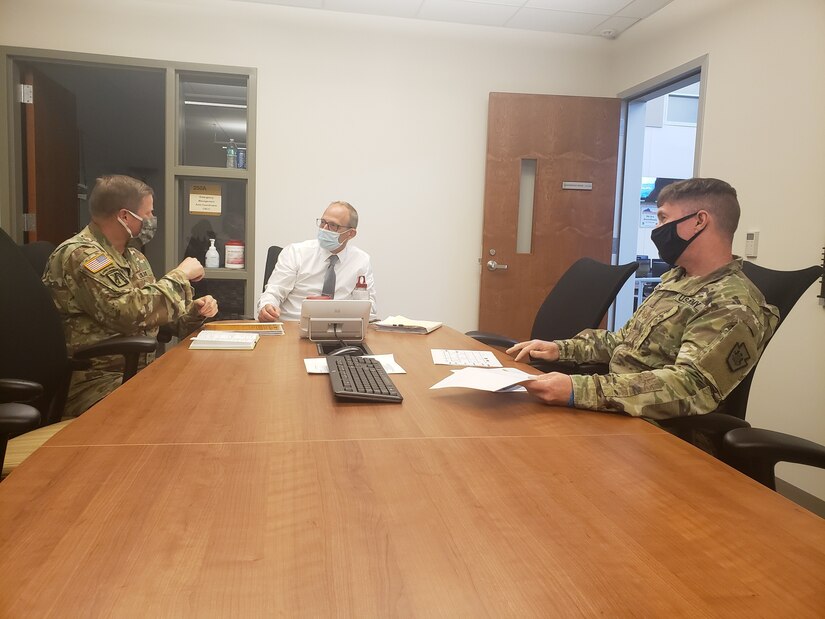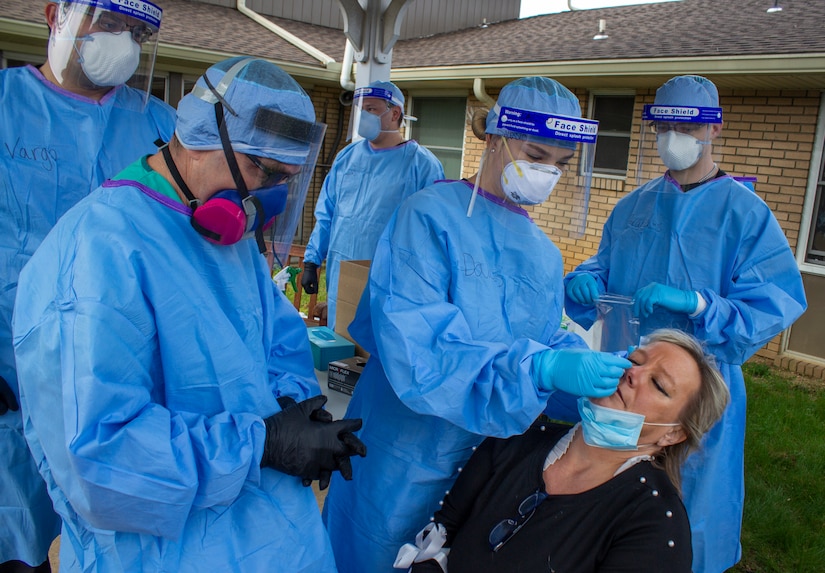PEMA officials realized early that this response would be larger and more complex than prior responses, explained Army Maj. Jim O'Shea, the Pennsylvania National Guard’s emergency preparedness liaison officer for PEMA and the domestic operations exercise officer.
''So, one of the first augmentations they asked for were planners from the Pennsylvania National Guard,'' O'Shea said. “The Pennsylvania Guard is frequently mobilized to assist in emergencies like snow storms or flooding event. But those responses are often limited to a few counties for a few days.

''We are always ready to assist with troops that can provide capabilities like transportation as well as providing liaisons [at PEMA] and at the County Emergency Operations Centers,'' he continued. ''However, we have not previously provided planning support to the state incident management team. For COVID-19, we assisted the IMT as well as provided PEMA and [Department of NHealth] support with the Pennsylvania National Guard military medical planning team.''
Military members — with their experience in dealing with complex, prolonged, fluid and emergency events — are well-suited to assist in planning a large-scale and extended emergency response like COVID-19, said Army Lt. Col. Travis Shick, one of the planners who assisted.
''We don't do anything without formalized plans and analysis,'' Shick said. ''We may not always have the perfect answers, but if you needed planners in a rapid way, mobilizing the Pennsylvania National Guard was the right thing to do.''
Shick is the guard's branch chief for domestic operations, stationed at the joint operations center at Fort Indiantown Gap, the Pennsylvania National Guard’s headquarters. He deployed in 2009 as a brigade planning officer in Iraq and also worked as a division planning officer.
The planners assigned to PEMA were all senior officers with decades of military experience. They were able to assist with modeling expected COVID-19 infection timelines, establishing the five alternate care sites that were located throughout Pennsylvania and assist in other medical and logistics planning support throughout the crisis.
''Since we were available to provide more generalized planning support, we could free these experts up for planning that required their special knowledge,'' Shick said. ''Our presence helped PEMA staff members with specific skill sets, like a physician, work on issues that required their expertise.''
The planners were impressed by the skill of the PEMA personnel they were augmenting, Shick added.

''My biggest takeaway I had was not having had served at PEMA before,'' he said. ''I am extremely confident in their ability to handle emergencies after seeing it firsthand,'' he said. ''The other takeaway was the depth of horsepower PA has for dealing with emergencies.''
Both O'Shea and Shick thought being part of the COVID-19 response was worthwhile.
''You know you are part of something important,'' O'Shea said. ''You are ensuring those first responders and National Guard members on the ground are getting the information they need to help people.''
The guard has continued to provide a broad range of COVID-19 support to PEMA, including assistance at testing sites and nursing homes. Thousands of National Guardsmen nationwide are assisting with the COVID-19 response in a broad array of missions.
The Pennsylvania National Guard is one of the largest and most deployed National Guards in the nation. In addition to its federal mission, the Pennsylvania National Guard responds to domestic emergencies, working with the PEMA, the Federal Emergency Management Agency, U.S. Northern Command and dozens of federal, state and local agencies. The guard maintains a joint operations center at Fort Indiantown Gap staffed by Pennsylvania Guard members 24/7 to support its domestic mission.
(Army Lt. Col. Angela King-Sweigart is assigned to Joint Force Headquarters, Pennsylvania National Guard.)






No comments:
Post a Comment